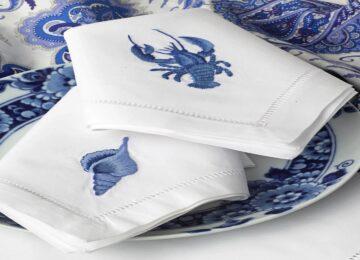Traditional rugs add a timeless charm and elegance to any space. However, their beauty and longevity depend on how well they are maintained. These valuable pieces, often handcrafted and made from exquisite materials, require special care to keep them looking their best. This guide will walk you through everything you need to know about maintaining and caring for your traditional rugs, from understanding their materials to tackling stains and spills and even proper storage techniques.
Introduction to Traditional Rugs
Traditional rugs come in various styles and origins, such as Persian, Oriental, Turkish, or Afghan rugs. These rugs are often handcrafted with intricate designs and vibrant colors, making them a centerpiece for many homes. Since they involve meticulous craftsmanship and high-quality materials, caring for them properly is essential to preserve their value and beauty.
Understanding how to care for your traditional rug not only ensures its longevity but also enhances its aesthetic appeal. Whether you’re a seasoned rug collector or a first-time owner, this guide offers practical tips for keeping your rug in pristine condition.
Understanding Rug Materials
One of the most critical aspects of caring for traditional rugs is understanding their materials. These rugs are made using natural fibers, which behave differently from synthetic ones. Here’s an overview of common materials:
- Wool: Durable, soft, and naturally stain-resistant, wool is the most commonly used material in traditional rugs. It also adds warmth and comfort to a space.
- Silk: Silk rugs are lightweight and delicate, often prized for their sheen and intricacy. They require extra care due to their fragile nature.
- Cotton: Often used as a foundation material, cotton provides flexibility and strength to rugs.
- Jute or Sisal: While less common in traditional rugs, these natural fibers offer durability and texture.
Knowing your rug’s material helps tailor your care routine to meet its specific needs.
Regular Cleaning and Vacuuming Techniques
Regular cleaning is fundamental to maintaining your traditional rug. Everyday dirt and debris can settle into the fibers, causing wear over time. Follow these steps for effective routine care:
- Vacuum with Caution: Use a vacuum with gentle suction to avoid damaging delicate fibers. For silk or heavily knotted wool rugs, skip the central beater bar to prevent snags.
- Vacuum Both Sides: Dust tends to settle on the underside of rugs, so flip your rug and vacuum the back every few months.
- Shake Out Smaller Rugs: Smaller traditional rugs can be taken outside and gently shaken to remove loose dirt.
- Avoid Excessive Cleaning: Over-vacuuming can loosen fibers, so stick to a schedule of once a week or less depending on foot traffic.
Addressing Stains and Spills
Accidents happen, and knowing how to handle stains can save your rug from permanent damage. Here are tips for tackling spills:
- Act Quickly: Blot (do not rub) the spill immediately with a clean, white cloth to absorb the liquid.
- Use Mild Solutions: Mix a solution of one teaspoon of mild detergent with one cup of water. Test the solution on a small, inconspicuous area before treating the stain.
- Avoid Harsh Chemicals: Strong cleaning agents can damage natural fibers and fade dyes. Always opt for gentle cleaners designed for delicate fabrics.
- Consult Professionals for Tough Stains: If the stain persists or involves tough substances like wine or oil, consider calling a professional rug cleaner.
Professional Cleaning vs. DIY
Deciding between professional cleaning and DIY methods depends on various factors like the rug’s material, age, and the severity of the dirt or damage.
- When to Choose Professional Cleaning:
- Your rug is made of silk or another delicate material.
- It has deep-seated dirt or stains that DIY methods can’t handle.
- You haven’t cleaned your rug professionally in over a year.
- DIY Cleaning Tips:
- Use lukewarm water and a soft brush for surface cleaning.
- Spot-clean stains as soon as they happen.
- Avoid over-saturating the rug, as excess moisture can weaken fibers and foundations.
Professional cleaning is advisable for an annual deep clean, especially for valuable traditional rugs.
Preventative Measures and Rug Padding
Prevention is better than cure, and applying some proactive measures can help your rug stay in excellent condition:
- Use Rug Pads: A rug pad prevents slipping, reduces wear and tear, and offers additional cushioning.
- Rotate Your Rug Regularly: Rotating your rug every six months ensures even exposure to sunlight and wear patterns, which prevents fading and uneven thinning.
- Limit Sun Exposure: Harsh sunlight can fade vibrant colors over time. Use curtains or UV-blocking window films if your rug is in a sunny spot.
- Shoes Off Policy: Reduce dirt accumulation by keeping outdoor shoes off your rug.
Storing Your Rugs Properly
If you need to store your rug for an extended period, consider the following tips to protect it:
- Clean Before Storing: Always vacuum and clean your rug thoroughly before storage to remove dirt and pests.
- Roll, Don’t Fold: Roll the rug with the pile facing inward to avoid creases.
- Use Acid-Free Paper: Wrap the rug in acid-free paper for added protection.
- Store in a Cool, Dry Place: Avoid damp areas like basements, as moisture can lead to mold and mildew.
Repairing Damaged Rugs
Minor damages, such as frayed edges or loose threads, can escalate if left unaddressed. Here’s what you can do:
- Refrain from DIY Fixes on Antique Rugs: For valuable or antique rugs, always consult a professional rug repair specialist.
- Repair Fringe and Edges: Fringes can unravel over time but are easy to repair professionally or using specialized fringe repair kits.
- Watch for Holes and Tears: Inspect your rug regularly for signs of damage caused by moths, pets, or wear and tear. Early detection makes repairs more manageable.
Preserve Your Rugs for Generations
Your traditional rug is more than just decor; it’s a piece of art that holds cultural and historical significance. With attention to proper maintenance and care, these beautiful pieces can last for generations, adding warmth and elegance to your home year after year.
By taking small steps, such as vacuuming with care, tackling stains immediately, and investing in professional cleaning when needed, you can ensure your rug’s colors stay vibrant and its fibers remain intact.
Need more guidance on traditional rug care? Feel free to reach out to our expert team or explore our comprehensive resource library for additional tips.












